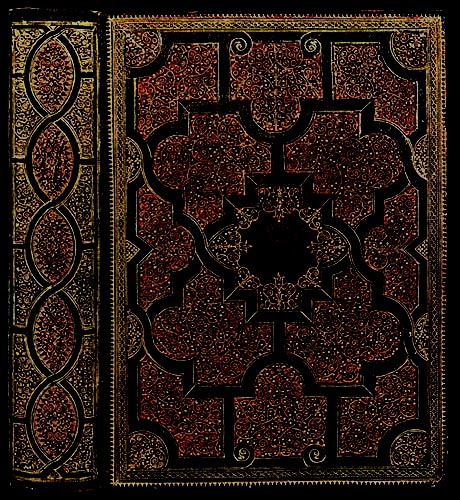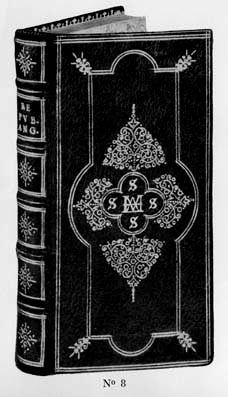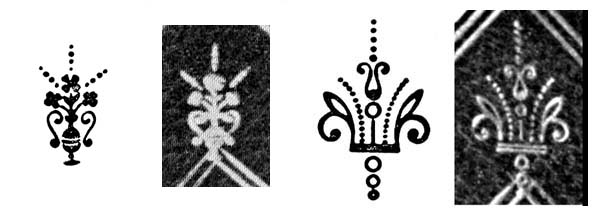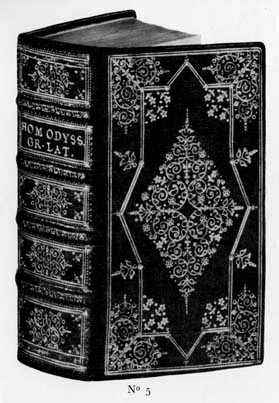


|
According the Raphael Esmerian's introductury remarks to his Atelier Macé Ruette chapter, Macé Ruette (1584-1644) began his appenticeship as a bookbinder in 1598 chez Dominique Salis. In 1606 he opened his own workshop; from 1629 to 1634 he was administrater of la Confrérie des libraires imprimeurs et relieurs. Upon the death of Clovis Eve in 1634 he succeeded Eve as Relieur du Roi. and upon his own death in 1638 the post was passed on to his son Antoine. In his time, he edited a few volumes de sainteté and opened his own shop magasin de librairie in the rue Saint-Jean-de-Latran near la Fontaine Saint-Benoît Up till 1620 the style of the bindings by Macé Ruette's appears to have been limited to the more conventional designs of the period, fanfares, losange ét ecoincons and encadrements a la Duseuil. It was shortly after 1620 that the young Habert de Montmort (1600-1679) started collecting Elzeviers. Buying freshly published works which he would then have bound by Ruette. This we can easily verify by observing the dates of publication of these bound copies and noting certain changes in the decorative tools. |

| Raphael Esmerian states that he was able to examine 35 of these small volumes which were dated from 1620 to 1634: from 1620 to 1630 the fleuron of the inside frame was a small vase of flowers: after 1630 it was replaced by a larger fer a gerbes . |


|
There were changes also in the interior roulettes: one model disappeared in 1629 and was replaced by a second that lasted up till 1634 while a third appeared in 1633. Another interesting developement was in the quality of the leather (maroquin) which went from being quite rough and dark red to a finer smooth grained form of an agreeable colour after 1625-1626. Esmerian notes that within these bindings we find the first experimentation with pointille tools, timid at first in the format which Esmerian terms a gerbes a format which he notes later becomming more elaborate and important, in fact primordial in the reliure of the next 50 years. "The bindings of Ruette are of many different styles, in general he excelled in the smaller formats rather than the folios, especially when mixing the standard solid tools with pointillés and branchages. However the style in which he proved himself to be very original is that of losange-ecoincons" |

|
From this introduction one has the impression that Ruette was just beginning to experiment with pointille tools in the early 20's and yet Esmerians example No.4 to which he has given a production date of 1622 appears to be already a well developed form of pointille elaboration. (postscript: 2021, now after years of mulling over this issue, I am not sure that example No. 4 should be included in the Mace Ruette collection) On the next page we will examine some of the early tools, to try an establish a more complete list of Ruette's tools. |

| Virtual Bookings, created by L. A. Miller | return to the Home page of VIRTUAL BOOKBINDINGS |